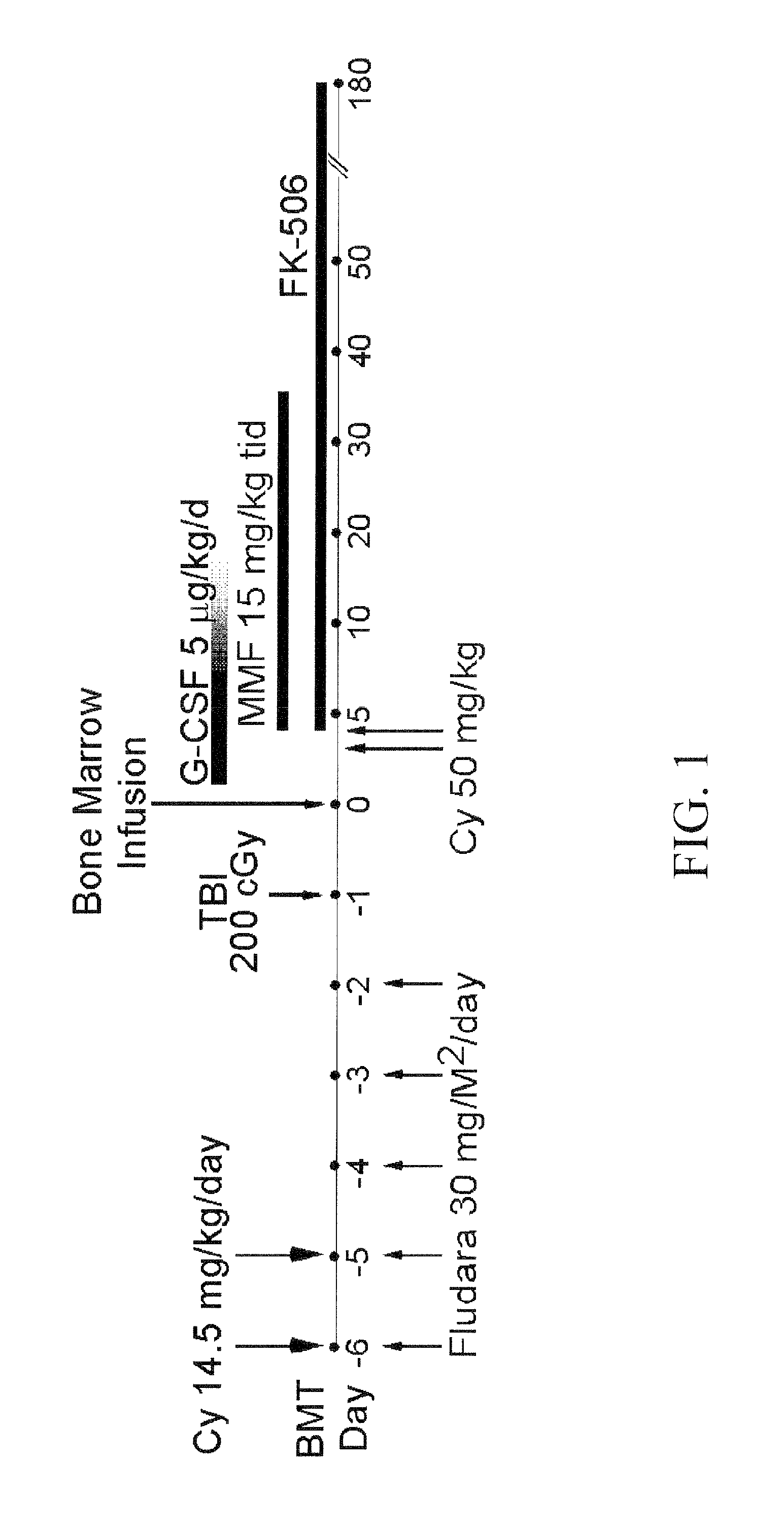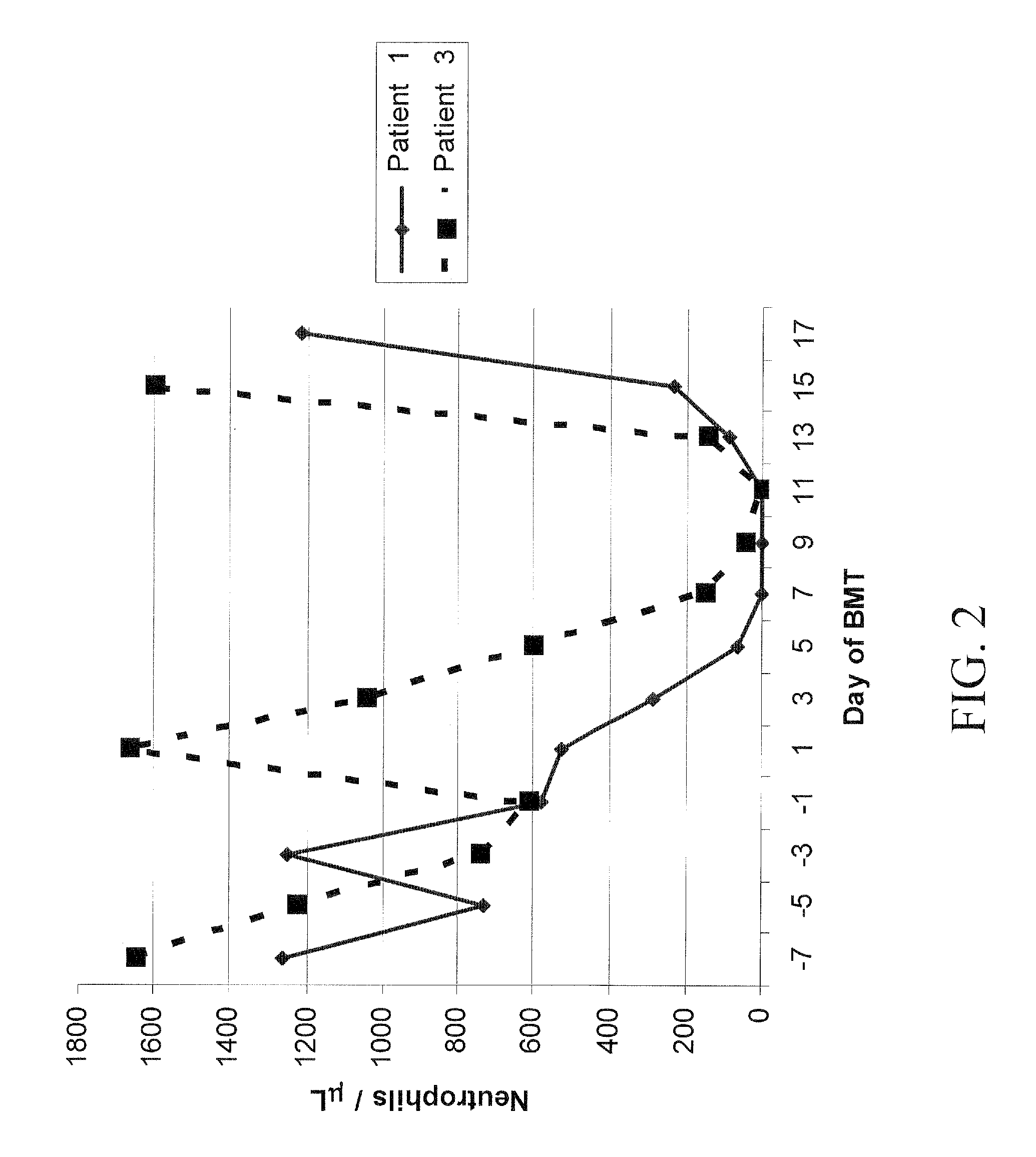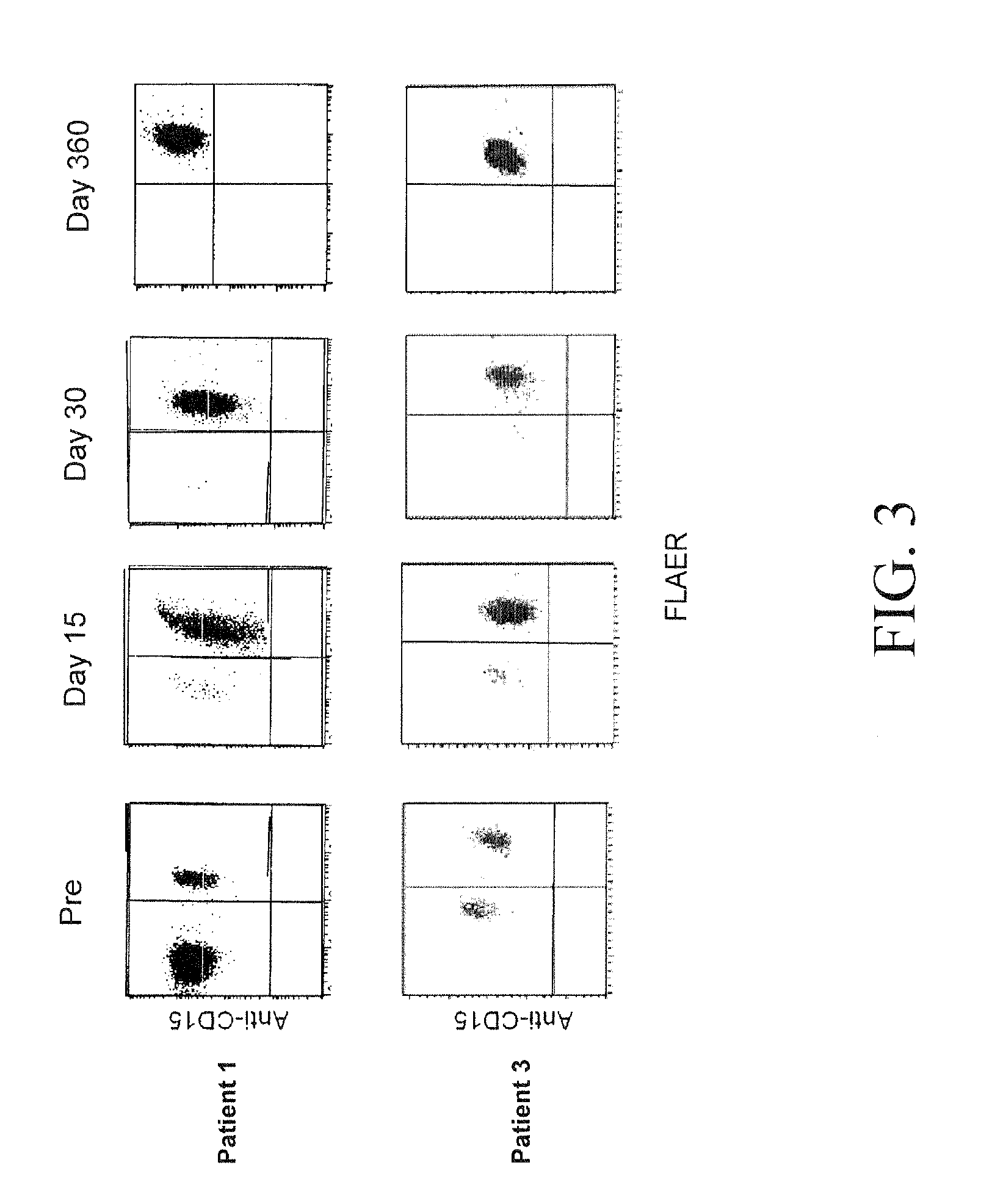Use of high-dose, post-transplantation oxazaphosphorine drugs for reduction of transplant rejection
a technology of oxazaphosphorine and oxazaphosphorine, which is applied in the direction of phosphorous compound active ingredients, antibody medical ingredients, immunological disorders, etc., can solve the problems of limiting the application of bmt, limiting the enthusiasm for this approach, and limiting the identification of suitable donors, so as to reduce the rejection of transplants and the effect of reducing transplants
- Summary
- Abstract
- Description
- Claims
- Application Information
AI Technical Summary
Benefits of technology
Problems solved by technology
Method used
Image
Examples
example 1
Exemplified Treatment Schema for Sickle Cell Anemia
[0111]
[0112]Placement of a double lumen central venous catheter can be used for administration of IV medications and transfusion of blood products. Preferably, documentation of a detailed history and physical examination and standard evaluation of cardiac, pulmonary, liver and renal function of the subject will be obtained.
[0113]Fludarabine can be administered by intravenous infusion over 30 min on D−6 to D−2. The dose will be 30 mg / m2. For decreased creatinine clearance (<61 ml / min) determined by the Cockcroft Formula:
CCr=(140−age)×IBW (kg) / PCr×72[0114]x 0.85 (for women)[0115]Fludarabine dosage should be reduced as follows:[0116]CCr 46-60 ml / min, fludarabine=24 mg / m2 [0117]CCr 31-45 ml / min, fludarabine=22.5 mg / m2 [0118]CCr 21-30 ml / min, fludarabine=19.5 mg / m2 [0119]CCr 2
[0120]Cyclophosphamide can be administered as an iv infusion over 1-2 hours, (depending on volume) on D−6 and D−5. The dose of pre-transplantation cyclophospham...
example 2
Treatment Plan for HLA Matched Related and Unrelated Bone Marrow Transplantation With Busulfan / Cyclophosphamide and Post-Transplantation Cyclophosphamide for Hematological Malignancies
[0125]
Busulfan4.0 mg / kg / day oraldivided q5-6h × 4days OR 160 mg / m2 / PretransplantPosttransplantday IVCyclophosphamideCyclophosphamideFK506MMFdivided q5-6h × 450 mg / kg / day50 mg / kg / day0.05 mg / kg IV15 mg / kgRegimen #daysIVIVor PO BIDPO TID1Busulfan d−7 to −4d−3 to −1d+3002Busulfan d−6 to −3d−2 to −1d+3 to +4003Busulfan d−6 to −3d−2 to −1d+3 to +40d+5 to +354Busulfan d−6 to −3d−2 to −1d+3 to +4d+5 to +50d+5 to +35
Preparative Regimen Administration:
[0126]Dilantin dose will be based on weight per BMT unit standard of care for patients above 10 years of age.
[0127]Patients at least 6 years old receiving oral Busulfan will receive a starting dosage of 4 mg / kg / day PO divided Q5-6H for 4 days on days −6 through day −3 (days −7 through day −4 for regimen 1). (Note: For all regimens, Busulfan will be administered per...
example 3
Post-Transplantation High-Dose Cyclophosphamide (CY) is Effective Single Agent GVHD Prophylaxis that Permits Prompt Immune Reconstitution After Myeloablative HLA Matched Related And Unrelated Bone Marrow Transplantation (BMT) in Humans with Advanced Hematologic Malignancies
[0133]Prolonged pharmacologic immunosuppression is a major obstacle to early immunologic recovery after allogeneic BMT. Based on results in animal models, the inventors studied whether high-dose Cy alone after HLA-matched related or unrelated BMT is effective prophylaxis against severe acute GVHD while permitting effective reconstitution of lymphocytes, including regulatory T cells (Tregs). Forty-six consecutive patients (median age 41, range 1-64) with advanced hematologic malignancies received HLA-matched related (n=28) or unrelated (n=18) bone marrow after conditioning with busulfan on days −7 to −3 and Cy (50 mg / kg / day) on days −2 and −1, +3, and +4. No additional GVHD prophylaxis was administered. The cumulat...
PUM
| Property | Measurement | Unit |
|---|---|---|
| resistance | aaaaa | aaaaa |
| plasticity | aaaaa | aaaaa |
| specific strengths | aaaaa | aaaaa |
Abstract
Description
Claims
Application Information
 Login to View More
Login to View More - R&D
- Intellectual Property
- Life Sciences
- Materials
- Tech Scout
- Unparalleled Data Quality
- Higher Quality Content
- 60% Fewer Hallucinations
Browse by: Latest US Patents, China's latest patents, Technical Efficacy Thesaurus, Application Domain, Technology Topic, Popular Technical Reports.
© 2025 PatSnap. All rights reserved.Legal|Privacy policy|Modern Slavery Act Transparency Statement|Sitemap|About US| Contact US: help@patsnap.com



